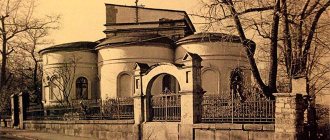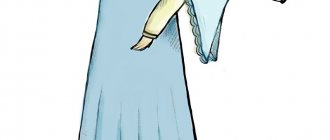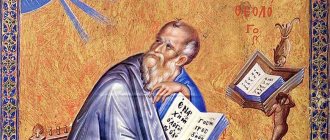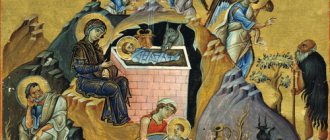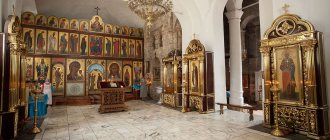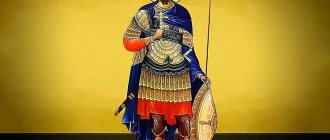| Christ of Saint John of the Cross | |
| Artist | Salvador Dali |
| Year | 1951 |
| Middle | Oil on canvas |
| Dimensions | 205 cm × 116 cm (80.7 × 45.67 in) |
| Location | Kelvingrove Art Gallery and Museum, Glasgow |
Christ of St John of the Cross
is a painting by Salvador Dalí made in 1951 and is in the collection of Kelvingrove Art Gallery and Museum, Glasgow. It depicts Jesus Christ on the cross in the dark sky, floating over a pond with a boat and fishermen. Although the image is of a crucifixion, it is devoid of nails, blood and the crown of thorns because, according to Dali, he was convinced in a dream that these features would mar his image of Christ. Also in the dream, the importance of depicting Christ in the extreme perspective evident in the painting was revealed to him.
Heading
Sketch of the crucifixion of St.
John of the Cross, c. 1550, inspired by Dali Painting known as Christ of St. John of the Cross
, because its design is based on a drawing by the 16th century Spanish friar John of the Cross.[
citation needed
] The composition of Christ is also based on a triangle and a circle (the triangle is formed by the hands of Christ; the circle is formed by the head of Christ). The triangle, since it has three sides, can be seen as a reference to the Trinity, and the circle can be an allusion to Platonic thought. The circle symbolizes Unity: all things exist in the “three,” but in the four they are cheerful.[1]
DARKNESS AND LIGHT
review by Alexander Men
"Christ St. John on the Cross" is one of the most famous paintings by Salvador Dali. In 1951, the artist switched to the position of Catholic surrealism, and the frightening images born of the darkness of the subconscious were replaced in his work by a new interpretation of Christian symbols. Like much of Dali's art, this painting is associated with the Spanish spiritual tradition.
Dali's Saint John is Juan de la Cruz (1542 - 1591), a famous mystical poet who lived during the Catholic Reform. He was born into an impoverished noble family and as a young man joined the Carmelite monastic order, which attracted him with its harsh rules.
Already a monk, Juan studied at the University of Salamanca. His friendship with Teresa of Avila, abbess of the female branch of Carmel, writer, and champion of the transformation of church life, had a huge influence on his inner life. She fought a difficult battle with the clerical conservatives, and Juan, involved in this struggle, ended up in prison. With Teresa's help, he escaped in 1578. But in conclusion, Juan wrote “Spiritual Songs,” which were included in the golden fund of Spanish poetry. In them, using images from the biblical Song of Songs, Juan de la Cruz showed man's thorny path to comprehending Eternity.
Juan's mysticism is imbued with a thirst for unity with the divine Mystery of Being. Inner experience told him that the soul ascending the steps of contemplation would face difficult trials, a “dark night” that not everyone could overcome. The absolute and the earthly are separated by an abyss. The experience of the “dark night” is similar to death. The conviction that the Absolute itself comes to meet people halfway helps to withstand it. Juan perceives the suffering of Jesus on the cross as the suffering of Heaven descending to earth. On the steep steps of the spiritual path, everything earthly in a person is burned out, while the Cross of Christ is the humiliation of the Divine.
Naturally, Juan's mysticism frightened his contemporaries. He was considered a heretic and possessed because Juan argued that the true way to Christ was the way of the cross. “Oh, souls who dream of calm and consoling spiritual paths, if only you knew how much you need to suffer in order to achieve this consolation and tranquility; if you knew how impossible this is without suffering and how without it you would not seek any consolation either in God or in creation, but would prefer the cross to them.”
The meaning of Dali's painting is connected with the harsh teachings of Juan de la Cruz.
We see a calm lake with a fishing boat on the shore. This is both an allusion to the gospel sermon at the Sea of Galilee, and at the same time a symbol of an enlightened life. The rays of the rising dawn illuminate the peaceful picture, but above it is the glow and black abysses of space. These are the abysses whose silence frightened Pascal. This is the Christ about whom philosophers and poets wrote. The dark abyss is only slightly covered by the golden “day cover”. “That’s why the night is scary for us” (Tyutchev). The unknown, the incomprehensible, surrounds the peaceful lake of life, an island in the endless ocean of darkness.
However, following the concept of Juan, Dali sees in the black abyss the image of Christ, suffering for the sake of unity with the world, for the sake of introducing it to the light. A giant crucifix stretched over the lake, protecting its fragile earthly tenderness, reminding that life is protected by the Cross.
Dali knew the tragedy of life. He understood that Chaos is hidden not only in the abyss, but also in man. He mercilessly opened up the world of the subconscious, showing the Chaos that stirs in its dark corners. In the film “Christ St. John" he contrasts it with the harmony of the spirit, the harmony that is achieved through struggle and suffering, through the cross - the cross of man and the cross of God, which unites them.
Inspiration
At the end of his research for the painting, Dalí explained his inspiration: “First, in 1950, I had a “cosmic dream” in which I saw this image in color and which in the dream represented the “core of the world.” atom.' Later this core took on a metaphysical meaning: I considered it “the very unity of the universe,” Christ! "[2]
To create the figure of Christ, Dali had a Hollywood stuntman. Russell Saunders is suspended from a suspension bridge so that he can see what the body will look like from the desired angle [3] and also allow for the effect of gravity on the human body. The body of water depicted is Port Lligat Bay, Dali's Residence at the time of painting.[4]
Description
The painting shows Jesus crucified, taken in perspective and viewed from above, whose head looking down is the central point of the work. The lower part of the painting represents a peaceful landscape formed by the Port Lligat bay. Below on the right are two fishermen working in a small port. Both are actually famous artists portrayed by Dali. Clouds of mystical and mysterious tones pass between Christ and the bay, illuminated by the radiance emanating from the cross and Christ. The work symbolizes Christ the Redeemer. The strong chiaroscuro serves to highlight the figure of Jesus and create a dramatic effect.
Christ is presented in a simple and human way. He has short hair, which is very different from classic depictions of Jesus with long hair, and he adopts a relaxed posture. The sign at the top of the cross, on which the initials INRI were allegedly placed, is a small folded piece of paper.
Dali used a professional trapeze artist as a model to paint Christ. It should be noted that Christ is not wounded or nailed to the cross; there are no ulcers or wounds, much less blood. It seems to be floating next to the cross.
This is perhaps the most humane and humble work that has been painted on the Crucifixion of Christ, although we can also argue that the point of view of the observer who sees Christ from above, that is, from where God the Father could see Him, places the artist in this role.
Whatever the interpretation, in one sense or another, the originality and entertainment of the result is undeniable.
Story
The painting and the intellectual property rights were acquired for the Glasgow Corporation in 1952 by Tom Honeyman, then director of Glasgow Museums. Honeyman bought the painting for £8,200, a price considered high at the time, although it was less than the catalog price of £12,000, and included a copyright that returned Glasgow Museums many times its original cost.[ 5]
The purchase was controversial and a petition against it, arguing that the money should be spent on exhibition space for local artists, was presented to the students' council at the Glasgow School of Art.[6] The controversy led to Honeyman and Dalí becoming friends, corresponding with each other for many years after the initial acquisition.[3]
The painting was first exhibited at the city's Kelvingrove Art Gallery and Museum on 23 June 1952. In 1961, a visitor attacked a painting with a stone and tore the canvas with his hands.[7] It was successfully restored within a few months by conservators at Kelvingrove and returned to public display.[8] In 1993, the painting was moved to the city center. St Mungo's Museum of Religious Life and Art, but returned to Kelvingrove for re-opening in July 2006. It won a poll to decide Scotland's favorite picture of 2006, with 29% of the vote.[9]
Christ of Saint John of the Cross
Christ of Saint John of the Cross is Salvador Dali's most famous religious painting, and perhaps the most famous icon of the 20th century. It depicts Jesus on the cross in the dark sky, hanging over a pond and a boat with fishermen. Although this is an image of a crucifixion, there is no blood or crown of thorns. According to Dali, in a dream the conviction came to him that these attributes would spoil his composition. “Perhaps because of the Spanish saying, ‘not enough Christ, too much blood,’” he admitted. Inspiration, as the artist claimed, also appeared to him in a vision: “in 1950, I saw a “cosmic dream” in which this painting appeared to me in color and which in my dream was the “nucleus of an atom.” This core then took on a metaphysical meaning, and I saw it as the core component of the Universe—Christ!”
The composition is based on a drawing by a 16th-century Carmelite monk, St. John of the Cross. Around 1574 - 1577, while praying, he saw Jesus crucified from above, “as if from God’s point of view.” The drawing he created was kept in the Monastery of the Incarnation in Avila, where Dali saw it at the direction of another Carmelite, Father Bruno. “I developed a geometric triangle and circle that summarized all my previous experiences ‘aesthetically’, and inscribed my drawing of Christ into this triangle,” the artist explained.
Hollywood stuntman and gymnast Russell Saunders posed for the figure of Christ. Dali hung it from a special frame in his studio to see how the body looked at the right angle and how gravity affected it. Subsequently, the athlete said that the artist was very meticulous and careful in conveying all the details.
“I didn’t even know who Dali was at the time,” Saunders recalled in 1984. – I worked at Warner Bros. studio. and performed several tasks of a man with a cane and a waxed mustache. I was paid $35 a day to pose."
Dali said that when he completed the painting in the late autumn of 1951, it was so cold in his house in Port Lligat that Gala urgently decided to install central heating. He recalled the horror he experienced then, worrying about the canvas, on which the paint had not yet dried - and the workers raised clouds of dust. “We moved it from the studio to the bedroom so I could continue writing. The surface was covered with a white sheet so that nothing could touch the oil. I said that I would hardly be able to recreate my Christ if anything happened to him. Ten days later, central heating was installed and I was able to finish the painting,” the artist shared.
The painting itself and the intellectual property rights were acquired in 1952 by Glasgow Museums. The organization paid £8,200, which was a substantial sum at the time. Over time, the copyrights have repaid the museums' original cost many times over. However, the purchase was controversial at the time, with opponents believing the money should have been spent on exhibition space for local artists.
In 1961, a visitor to the Kelvingrove Museum threw a stone at the painting and then tore the canvas with his hands. It took several months to restore the work, after which it was again put on public display. In 2006, Christ of St John of the Cross was named Scotland's favorite painting, with 29% of the vote. In May 2013, British poet John Cooper Clarke said the image was fundamentally different from any other crucifixion because the angle of view conveyed the pain of this method of execution while hiding the "clichéd" facial expressions commonly found in such works.
Critical reception
This picture continues to cause controversy. At the time of his purchase of Honeyman, contemporary art critics concluded that creating such a traditional painting was a ploy by an artist already known for his surrealist art.[5] In 2009 The Guardian
art critic, Jonathan Jones, described it as "kitsch and bleak", but noted that the painting was "for better or worse, probably the most enduring vision of the crucifixion painted in the 20th century".[10]
In May 2013 BBC Radio 4c Great Lives
British poet John Cooper Clarke described this image as being completely different from any other depiction of crucifixion, as the angle of view conveys the hanging pain of this method of execution while hiding the typically clichéd facial expressions typically seen in such images.[11]
Description of Dali
In a 1952 special edition edited by the Scottish Art Review, Dalí explains the painting in the following words:
The position of Christ caused one of the first objections to this picture. From a religious point of view this objection is unfounded, since my painting was inspired by drawings in which St. John of the Cross himself depicted the Crucifixion. In my opinion, this painting must have been executed due to a state of ecstasy. When I first saw this drawing, it made such an impression on me that later, in California, in a dream I saw Christ in the same position, but in the landscape of Port Lligat, and I heard voices telling me: “Dali, you must draw this Christ!
And the next day I started painting it. Up to the point when I started working on the composition, my intention was to include all the attributes of the crucifixion - nails, crown of thorns, etc. - and turn the blood into red carnations attached to the hands and feet, with three flowers. jasmine protruding from the side of the wound. Flowers would have been paved with asceticism from Zurbaran. But just before I finished painting, a second dream changed all that, perhaps because of a Spanish proverb that says: To bad Christ, too much blood
.
In the second dream I saw a picture without anecdotal attributes: only the metaphysical beauty of Christ the God. At first he also intended to take the fishermen of Port Lligat as models, but in this dream, instead of them, a French peasant appeared, drawn by Lenain, in a boat, whose only face had changed, like that of a fisherman. from the port of Lligat. However, when viewed from behind, the fisherman had a silhouette. Velasqueña. My aesthetic ambitions in this painting were the opposite of all the Christians painted by most contemporary artists, who interpreted it in the sense of an expressionist and acrobat evoking emotion through ugliness. My main concern was to portray the beautiful Christ as the same God that he embodies.
